4.1 Species, communities and ecosystems
1/31
There's no tags or description
Looks like no tags are added yet.
Name | Mastery | Learn | Test | Matching | Spaced |
|---|
No study sessions yet.
32 Terms
Biological species
A group of populations whose members have the potential to interbreed in nature and produce viable, fertile offspring.
Population
A group of organisms that interbreed with each other
Difference between species and population
The difference between a species and a population is that a population is a group of organisms of the same species, but they must be living in the same place at the same time. A species are simply two organisms that can interbreed to produce fertile offspring.
Reproductive isolation
The existence of biological barriers that impede members of 2 species from producing viable offspring. Can be before or after fertilization
Prezygotic barriers
Barriers that prevent the reproduction between species
Habitat isolation
When 2 species encounter each rarely or never due to the different habitats they live in.
Does not have to be isolated by physical barrier. Could be one live in tree another live underground.
Temporal isolation
Species that breed at different times of the day
Ex: Flower blooms in spring vs another that blooms in summer so cant interchange gametes.
Behavioral isolation
The difference in courtship rituals or behavior that prevent populations from breeding.
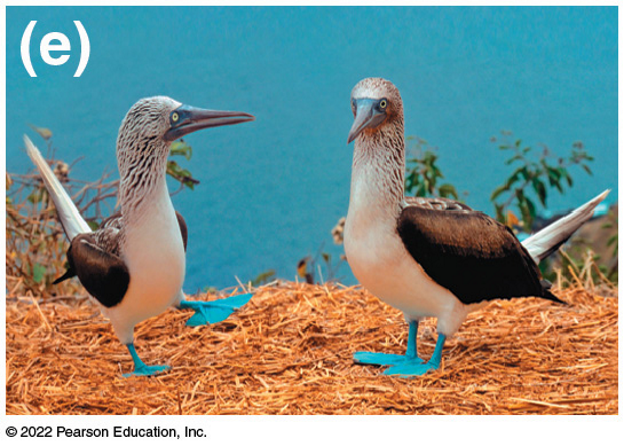
Mechanical isolation
Morphological differences that physically prevent mating from occuring
Gametic isolation
The imability of a gamete to fertilize eggs of other species.
Postzygotic barriers
Barriers that reduce the viability or reproductive ability of hybrid offspring.
Reduced hybrid viability
A postzygotic barrier where genes of the different parent species may interact and impair the hybrids development or survival
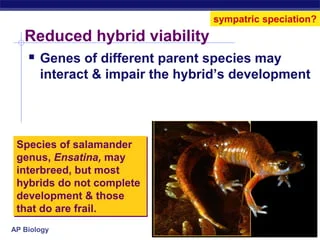
Hybrid breakdown
A postzygotic barrier when the first generation of hybrids are sterile but the second generation are sterile
Reduced hybrid fertility
A postzygotic barrier where the offspring is sterile even though it is vigorous (strong, able to survive)
Ex: Mules
Allopatric speciation
When an original population of a species is separated in some ways geographically, causing the gradual creation of a separate species due to geographic isolation
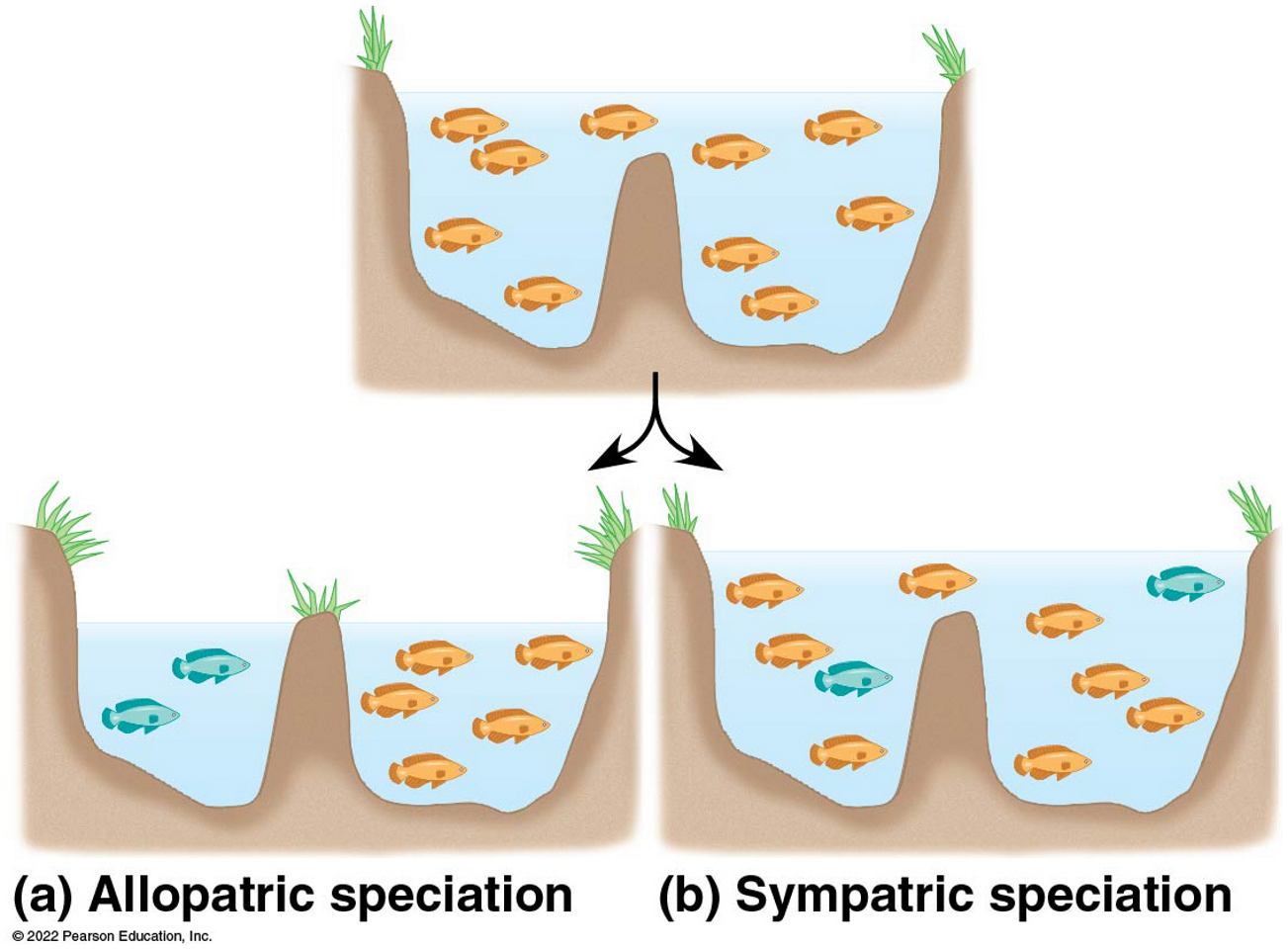
Sympatric speciation
The creation of species when populations are not geograpically isolated. Typically due to factors that change gene flow such as polyploidy, habitat differentiation and sexual selection.
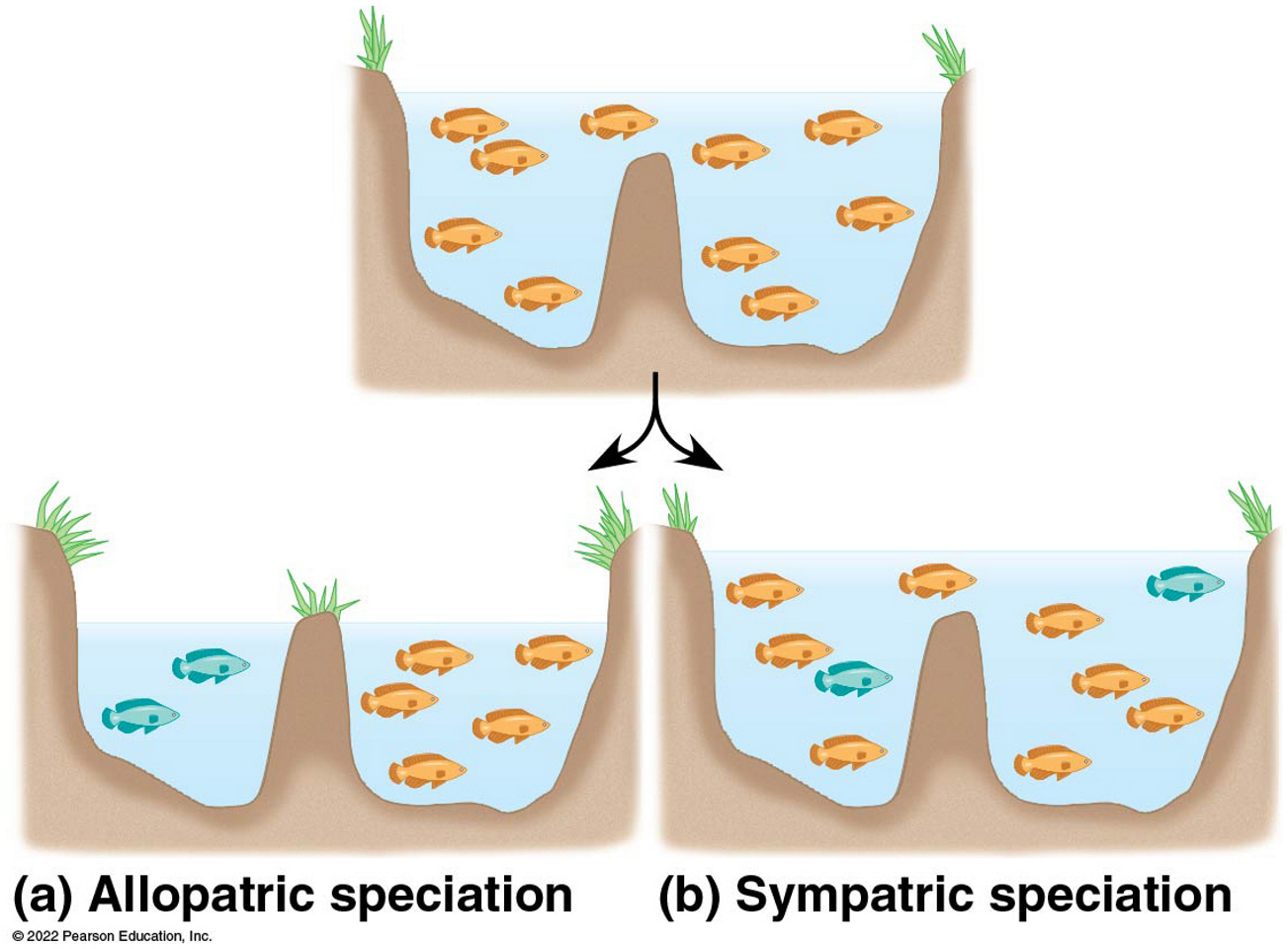
Polyploidy
The presence of extra chromosomes due to errors in cell division. Common in plants.
The sudden change in the chromosomes can instantly cause changes that create barriers that establishes that strain as a separate species.
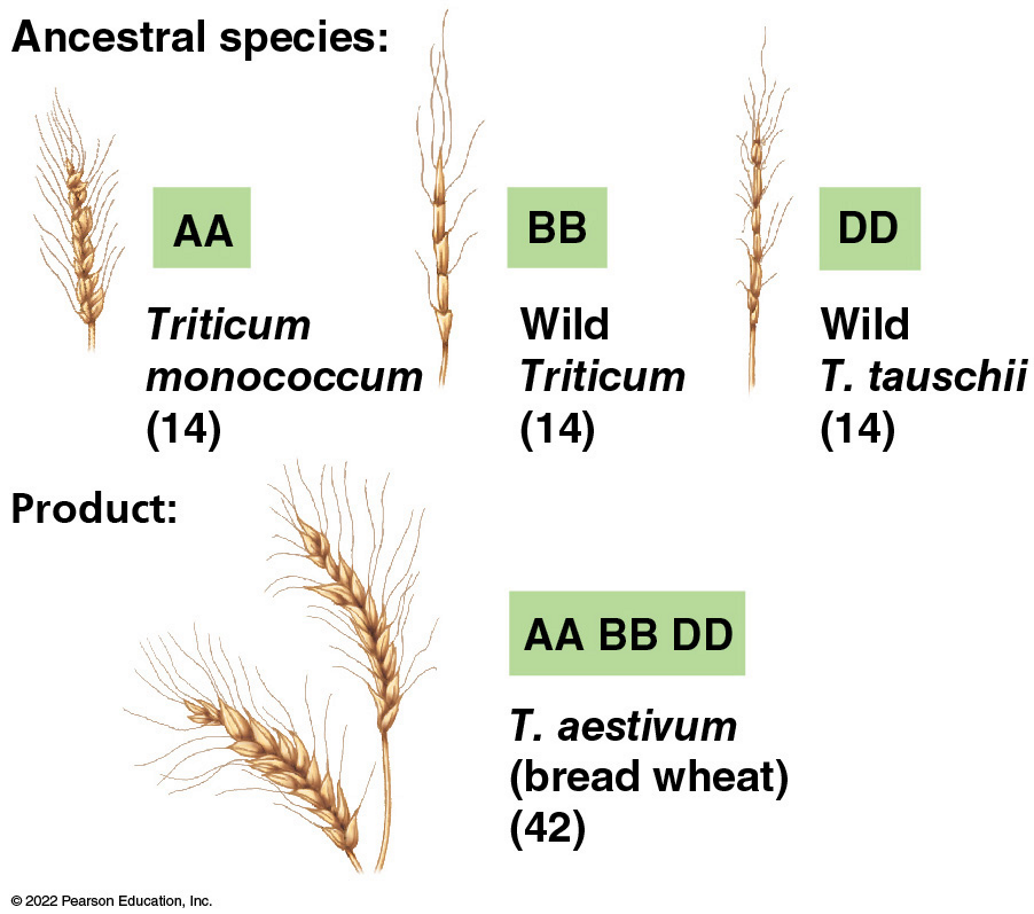
Sexual selection
The ability of an individual to attract mates based on their physical characteristics and behaviors.
Only desirable traits are kept which causes divergent selection which leads to speciation over time
Punctuated equlibrium
The model of the fossil record where there are periods of stagnation followed by sudden changes in evolution.
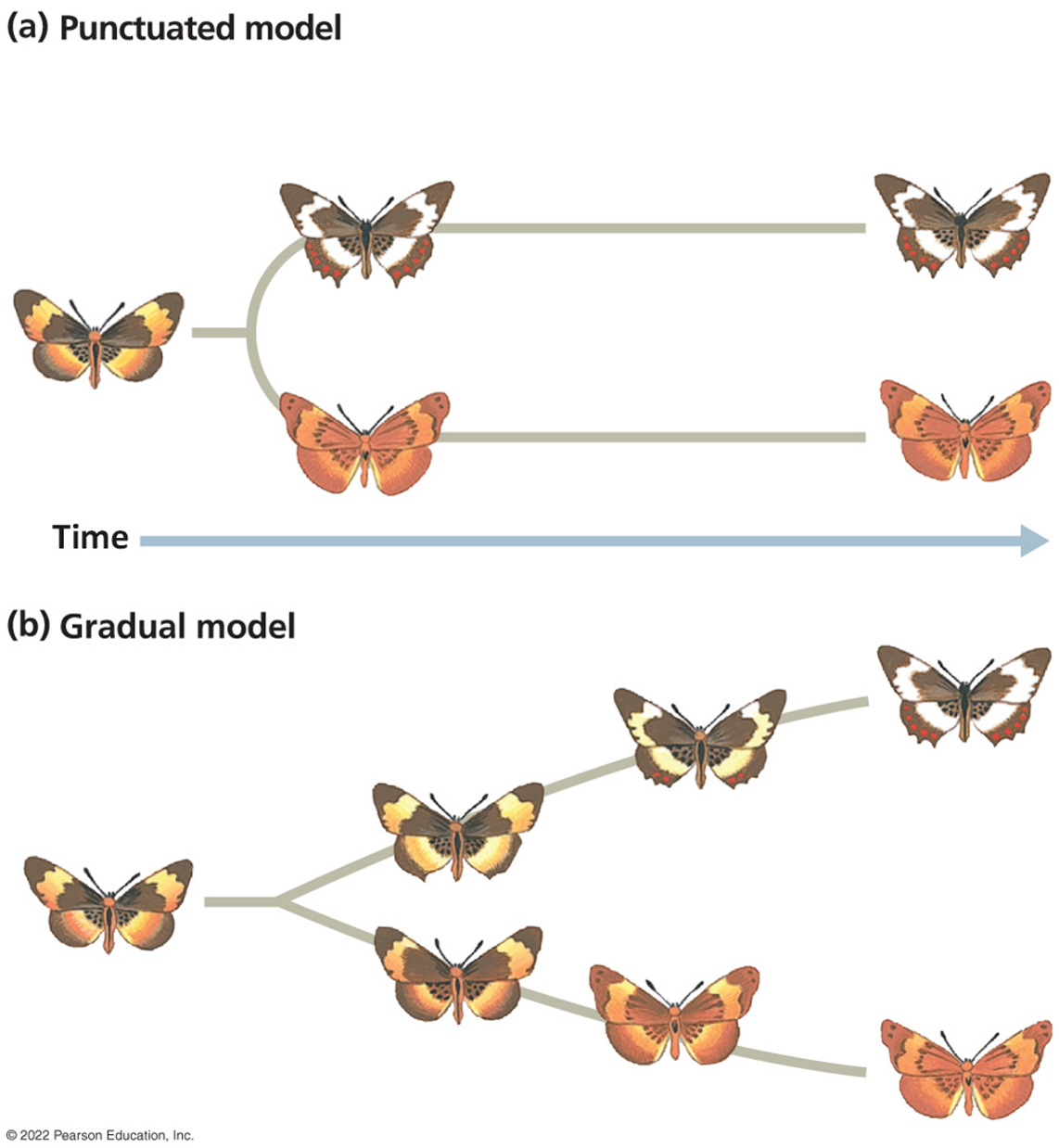
Gradual change
Evolution of a species with small gradual changes over time
Ecosystem
The community of organisms in an area and the physical factors with which they interact A
Community
A group of populations of different species in an area
Biotic factors
The other organisms that make up the living component in the environment
Ex: Predation, herbivory, mutualism, parasitism, competition
Abiotic factor
The nonliving chemical and physical attributes of the environment
Ex: Rock, temperature
Factors that impact ecosystems are mainly temperature, water and oxygen availability, salinity, sunlight, soil
Autotrophs
Primary producers that build organic molecules from inorganic sources
Ex: Most plants
Heterotrophs
Organisms that eat other organisms to maintain metabolic function
Ex: Herbivores and carnivores
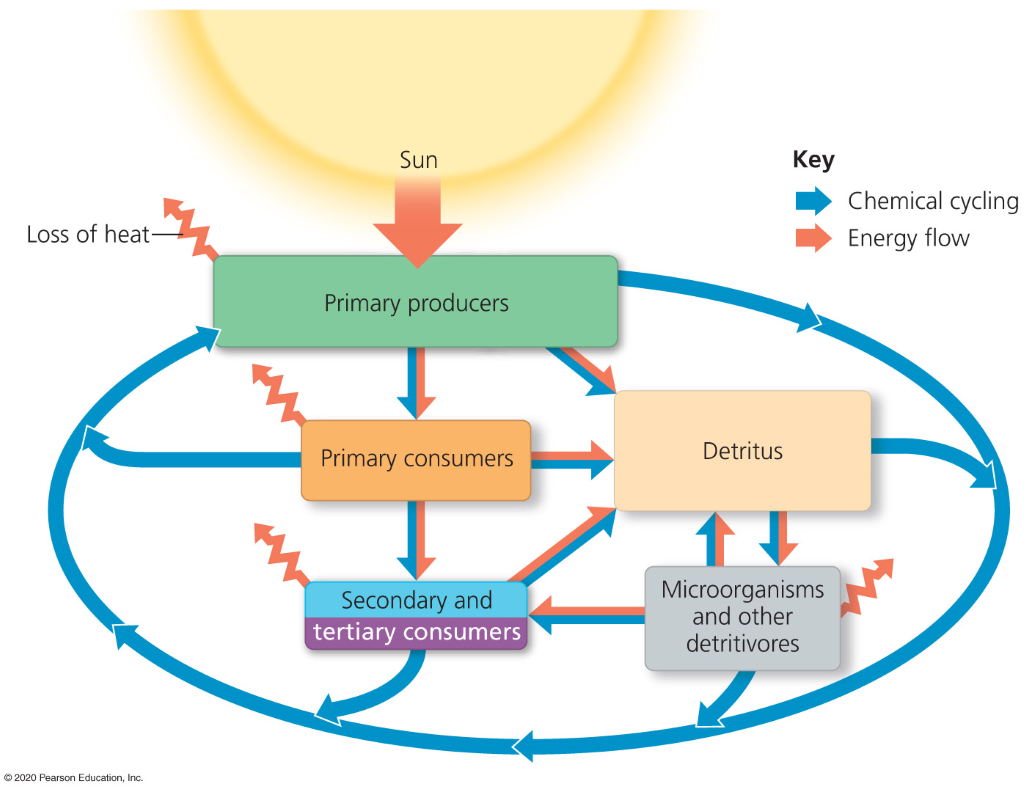
Detrivores
Decomposers that feed on nonliving organic matter like dead wood or leaves through internal digestion. Helps with nutrient recycling
Ex: Worms
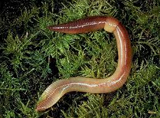
Saphotrophs
Decomposers that feed on nonliving organic matter through external digestion
Ex: Fungi

Water cycle
Biological importance: Essential to all organisms
Forms available to life: Primarily liquid, some harvest water vapor
Reservoirs: 97% of biosphere’s water is in oceans; 2% is in glaciers and polar ice caps; and 1% is in lakes, rivers, and groundwater
Key processes: Evaporation, transpiration, condensation, precipitation, and movement through surface and groundwater
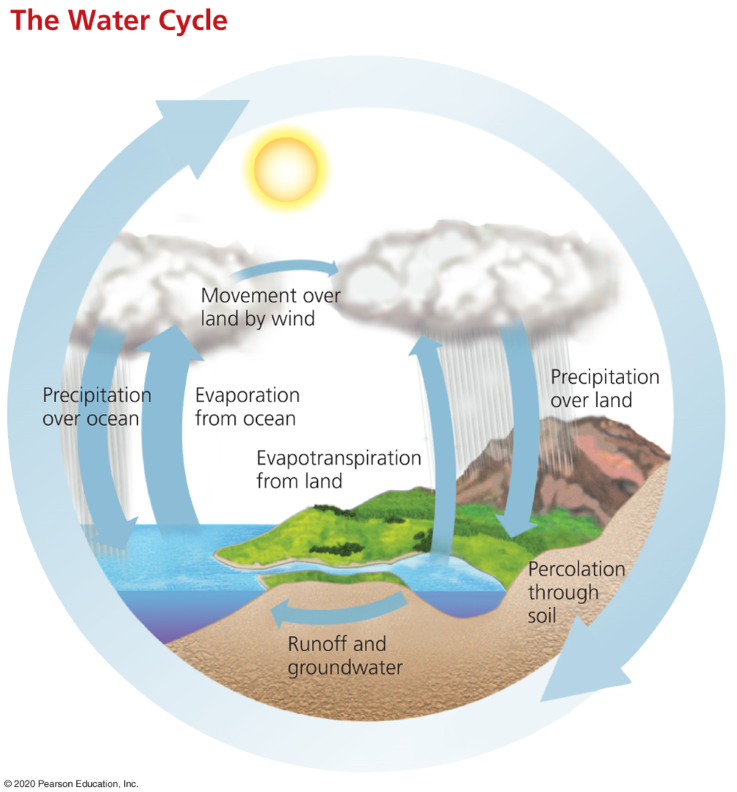
Carbon cycle
Biological importance: All organic molecules contain carbon.
Forms available to life: Photosynthetic organisms convert CO2 to organic forms used by consumers
Reservoirs: Fossil fuels, soils, sediments, solutes in oceans, plant and animal biomass, the atmosphere, and sedimentary rocks
Key processes: Photosynthesis takes up CO2 and respiration releases it; volcanic activity and burning fossil fuels and wood also release CO2
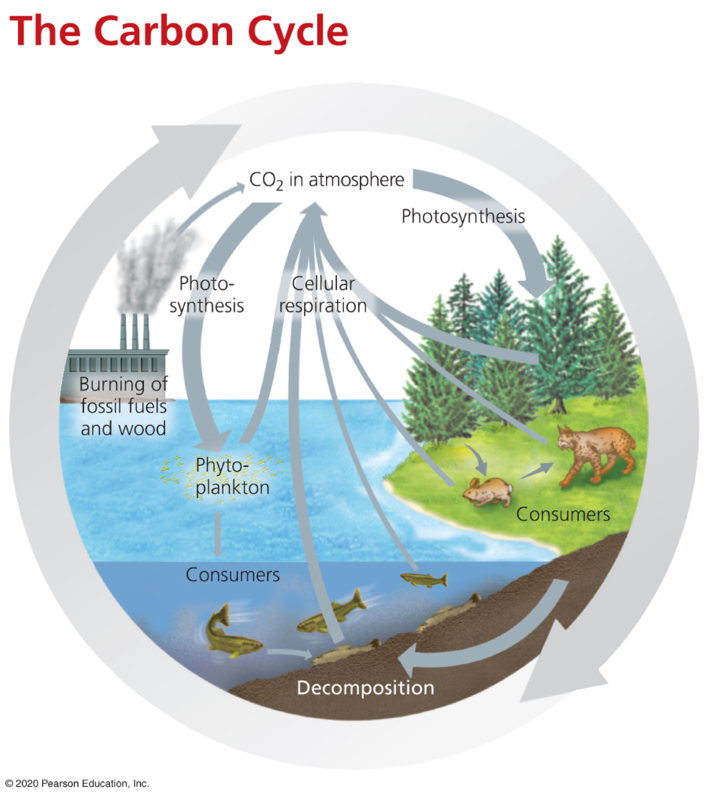
Nitrogen cycle
Biological importance: Amino acids, proteins, and nucleic acids contain nitrogen
Forms available to life: Plants use ammonium (NH4+) and nitrate (NO3-); bacteria use nitrite (NO2-); animals use organic forms.
Reservoirs: Atmosphere (N2), soils, sediments, surface and groundwater, organisms.
Key processes: Fixation (N2 to NH3), nitrification (NH4+ to NO3-), denitrification (NO3- to N2), industrial fertilizers, legume crops, reactive gas emissions.
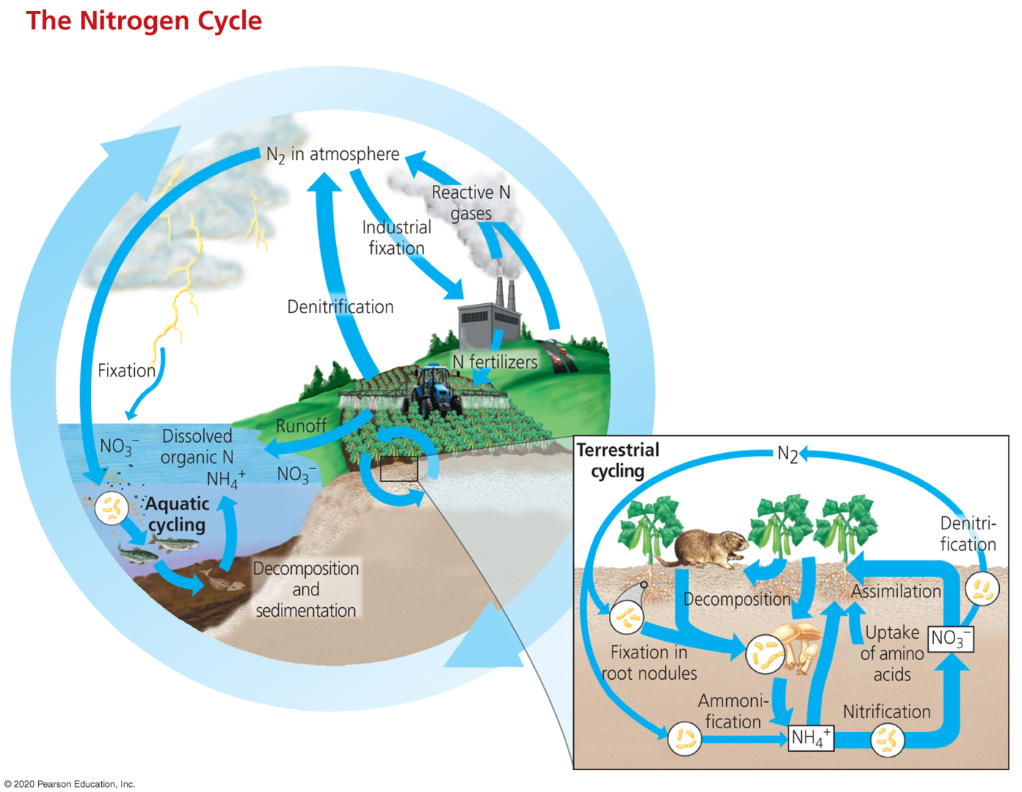
Phosphorous cycle
Biological importance: Nucleic acids, phospholipids, and ATP contain phosphorus.
Forms available to life: phosphate (PO43-) is the most important inorganic form of phosphorus.
Reservoirs: Sedimentary rocks of marine origin, soil, oceans (dissolved forms), organisms
Key processes: Weathering of rock, leaching into ground and surface water, incorporation into organic molecules, excretion by animals, and decomposition
